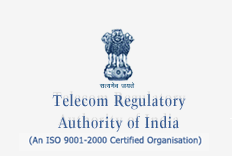 This post deals with last issue of our Spectrum Pricing Debate i.e. charging spectrum beyond stipulated limits at uniform rate. In my last three posts I made the following conclusions:
This post deals with last issue of our Spectrum Pricing Debate i.e. charging spectrum beyond stipulated limits at uniform rate. In my last three posts I made the following conclusions:
- The logic of pricing 1800 MHz spectrum at par with current 3G auction price is false. Neither should they be treated equal.
- Though pricing 900 MHz band 1.5 times to that of 1800 MHz looks quite convincing, TRAI’s justification falls short of insight.
- The spectrum allocated beyond stipulated limits of 6.2/5 MHz needs to be considered on the basis of maximum ratio AGR per MHz and 3G pricing shouldn’t be brought in to calculate one time pricing. I recommend one time Entry fee to be paid on the basis of that.
Here we will look how spectrum allocated beyond stipulated limits should be priced. The question is, should TRAI charge entire excess spectrum at a uniform rate?
In earlier post, it was mentioned that the spectrum beyond stipulated limit was allocated in chunks. First from 4.4 MHz to 6.2 MHz i.e. additional 1.8 MHz was allocated on the basis of subscriber linked criteria. Then spectrum beyond 6 MHz was allocated in chunk of 1 MHz. This has lead to different amount of spectrum in different service areas for different telcos.
Now TRAI has put forward different logic. According to that, authority have studied amount of CAPEX saved in case of upgradation of network from 6.2 MHz to 8 MHz and then 8 MHz to 10 MHz. Accordingly TRAI recommends (3.102) that:-
Accordingly, the Authority recommends that the excessspectrum beyond 8 MHz would be charged at 1.3 times the current price.
This conclusion is based on the calculations in Annexure XXII. Now let’s focus on what are they.
Again these XXII calculations are based on Traffic Calculations for GSM in Annexure XVII. The traffic carried at 70{af589cdba9d77786c8c861317dbad60bba1e2ebbf56e2ffab874a1b59fde9ce3} BTS loading for different spectrum allocations namely 4.4, 6.2, 8 & 10 MHz has been calculated based on following assumptions.
- 5/15 frequency reuse plan.
- RF frequency hopping.
- 1 slot for BCCH & 2 slots of SDCCH.
- 2/3/4/4 slots for GPRS/EDGE in each spectrum category.
- 30{af589cdba9d77786c8c861317dbad60bba1e2ebbf56e2ffab874a1b59fde9ce3} AMR Gain.
- 70{af589cdba9d77786c8c861317dbad60bba1e2ebbf56e2ffab874a1b59fde9ce3} BTS loading.
But if you ask me, the choice of frequency reuse plan 5/15 is quite odd or in fact according to literature, reaching to frequency reuse figure of 1/15 is quite extraordinary feat. Then what does that 5 indicate? The best possible figures to reuse for frequency reuse figures could be 4, 7, 12 etc and figure of 15 is quite odd to use in all calculations. Then how does TRAI assume same number of BCCH channels (15) for all set of spectrum allocations? TRAI has set fixed number of BCCH (15) in every set of spectrum allocations based on assumption that BTS is made up of 3 sectors, which is then multiplied by 5 in 5/15 figure. But this leads to very few traffic channels for 4.4 MHz spectrum and vice versa in case of 10 MHz spectrum case.
These assumptions lead to BTS traffic carried at 70{af589cdba9d77786c8c861317dbad60bba1e2ebbf56e2ffab874a1b59fde9ce3} of BTS loading. And as I said, based on per BTS traffic figures , number of BTS needed are estimated, provided number of subscribers are known. These BTS figures are quite misleading, as according to me 5/15 frequency reuse plan is quite odd to use in any calculations. What we need is the smallest frequency reuse number to maximize the system capacity. So I recommend to go with smaller frequency reuse number than 15 to re-calculate the BTS traffic figures.
In practical network scenario, most of the telcos don’t stick to any frequency reuse plan but have their own ad-hoc frequency reuse pattern. The fixed frequency reuse plan is better suited for green-field network rollouts. But when network matures, it’s better to stick to ad-hoc frequency reuse pattern.
Based on the different C/I ratio thresholds & then frequency reuse pattern number (<15) the traffic carried would be quite different. Also there’s no justification to use of 15 BCCH (why fixed?) channels in each spectrum allocation. This would lead to different pricing estimates for spectrum beyond 8 MHz spectrum.
( I conclude the Spectrum Pricing Debate series with this post. I tried to give comprehensive view of spectrum pricing issue in my blog series but details are beyond my reach to cover in blogs. If you have any doubts or feel that the conclusions are not justified, please do let me know at :[email protected] )



